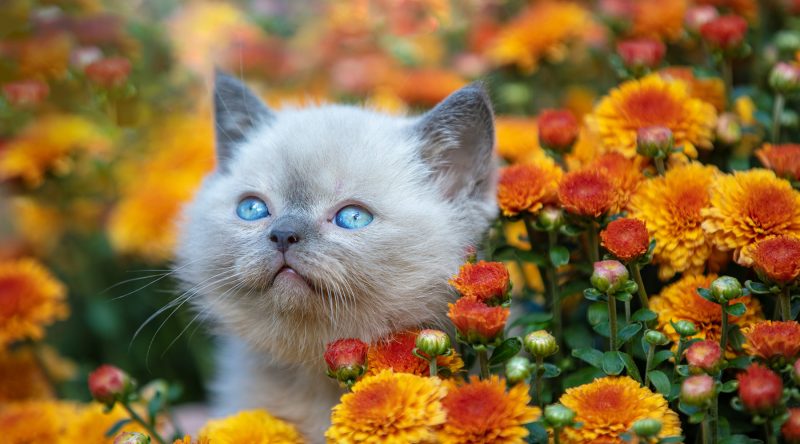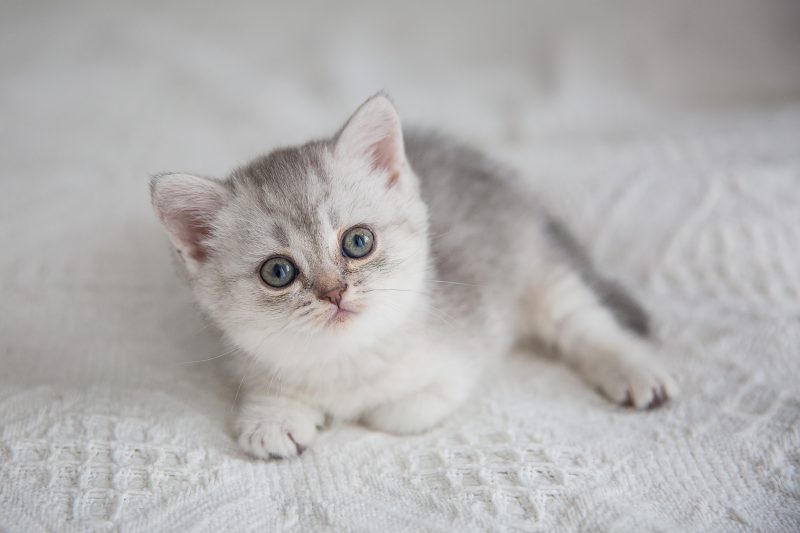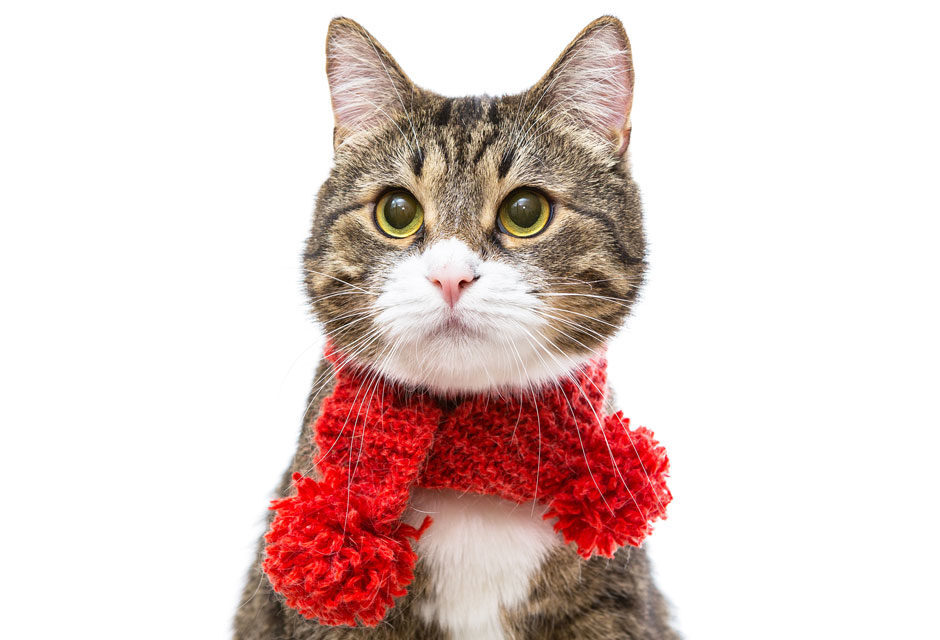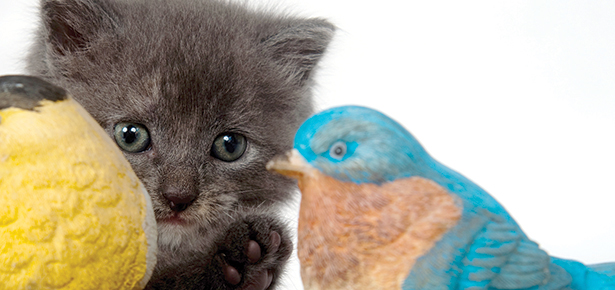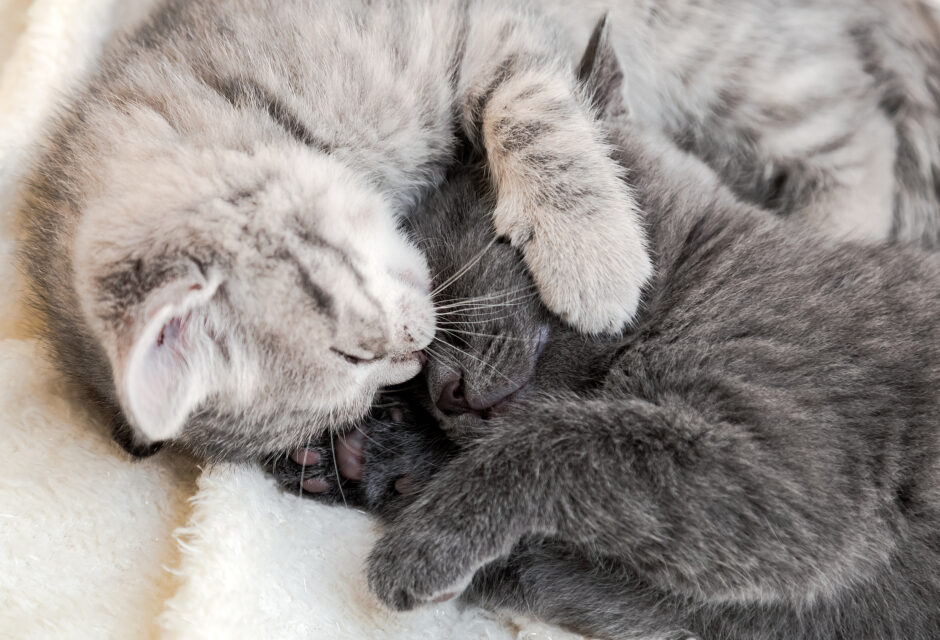
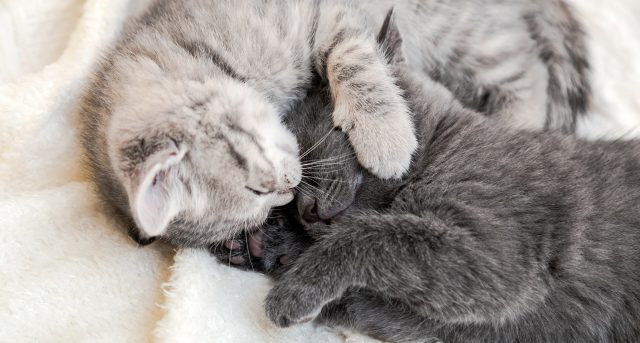
SOCIAL GLUE: Do Your Cats Have a Group Scent?
The importance of group scent in a multi-cat home
By: Mieshelle Nagelschneider, Cat Behaviourist, host of the TV show My Cat From Hell, and author of the cat behaviour science book, The Cat Whisperer
Last Updated:
Cats rely on scent more than any other sense, and they rely on group scent, in particular, for social comfort. Cats that are friends groom and rub up against each other to create and maintain their ever-important group scent. For example, if you have a five-cat household, each cat will have a “five cat” scent associated with their specific identity as a group, rather like we have last names that are family names. This group scent, or “social glue” as I call it, helps cats feel affiliated, friendly, and relaxed with one another.
Without a group scent, the best-case scenario is that your cats will merely coexist with one another, without ever forming a truly bonded relationship. I like to describe this as a scenario of forced captive living among domestic felids. In such circumstances, cats really don’t feel comfortable and probably would be happier as the only cat in the household. In the worst-case scenario, your cats will not get along well at all. Likely, they will display varying degrees of hostility toward one another. Behaviours such as excessive claw marking and urine marking may predominate or become more frequent.
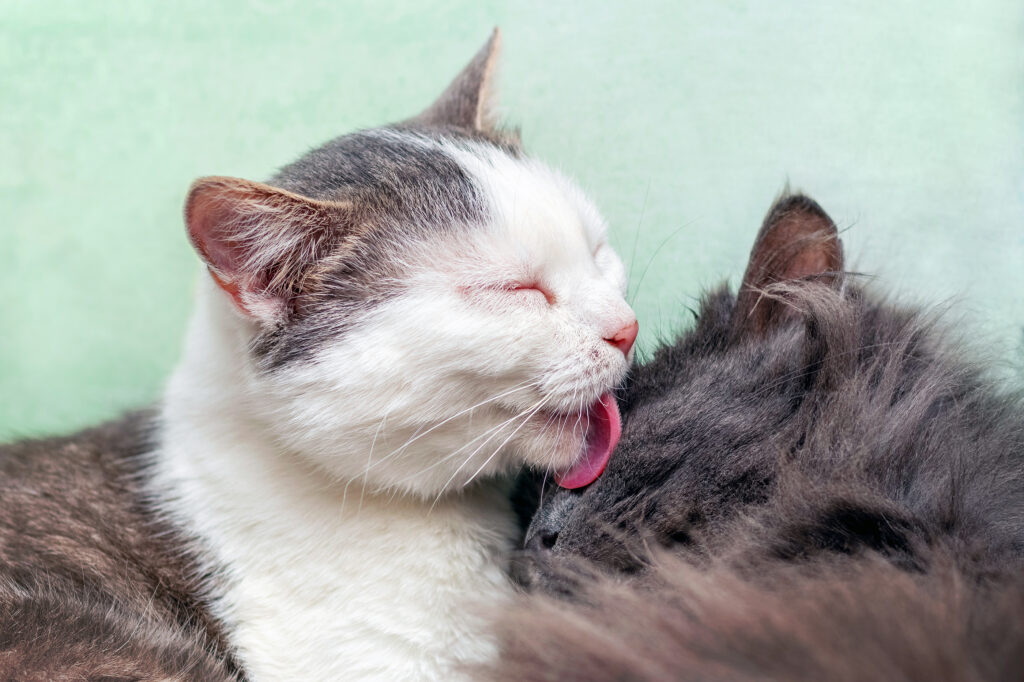
Photo: bigstock.com/MVolodymyr
In a group, one cat may be the “social facilitator” cat. These cats groom and rub up against all the cats in the home to generate a group scent, which fosters positive social behaviour. If you think your cats are lacking a group scent, you can become a social facilitator “cat” yourself, by brushing all of them daily with the same brush. If your cats don’t mind being brushed and remain calm when smelling a brush that contains another cat’s scent, you can easily facilitate more social and friendly interactions among them by doing this. By promoting “social glue” between your cats, an environment that was once a war zone can be transformed into a feline utopia. The cats will essentially feel a collective belonging to the group instead of discomfort with other cats that smell so distinctly different.
The technique: brush each cat two to three times a day, four to ten strokes for each cat every time you brush them. Rotate the order of cats as you go. The areas to brush are the areas where the cats themselves maintain the group scent—the entire head, neck, shoulders, and rib cage area. Use the same brush and don’t remove the hair from the brush between cats. Eventually you will remove the hair from the brush as it becomes full, but remember the idea is to spread the scent of each cat to the other. Before brushing, let your cat sniff the brush that contains the other cat’s scent. If his response is relaxed, proceed with brushing.
This can go a long way towards helping your cats get along and giving them the stress-free environment they deserve.
Check out Mieshelle Nagelschnider’s cat behaviourist clinic!
Join the newsletter and never miss out on cat content again!
"*" indicates required fields
By clicking the arrow, you agree to our web Terms of Use and Privacy & Cookie Policy. Easy unsubscribe links are provided in every email.





